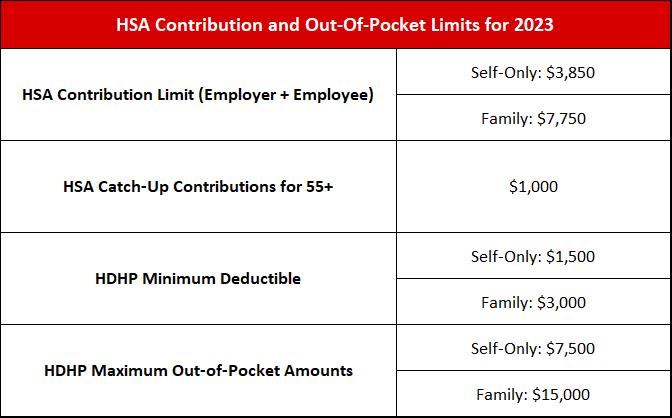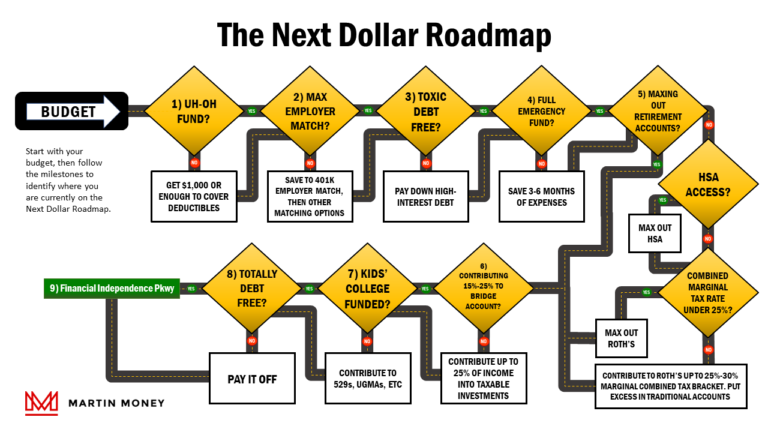HSA vs FSA: Which is Better for You?
If you are healthy and able to keep medical costs relatively low, then it’s hard to beat the triple tax advantages of the HSA. On the other hand, if you’re annual medical and prescription costs are relatively high, an FSA with a PPO plan is probably going to be a better financial decision.
HSA or FSA? It’s a question that seems to come up annually as people across the country start the open enrollment process.
We’ll look at the pros and cons of each of these savings vehicles and try to point you in the direction of the plan that works best in your situation.
Depending on the circumstances of your own health, the HSA has more upside potential than FSAs. Let’s talk about why.
1) How do HSAs and FSAs work?
Both Health Savings Accounts (HSAs) and Flexible Spending Accounts (FSAs) are savings vehicles that allow account holders to save pretax dollars in an account for future healthcare expenses.
In both cases, if funds in the account are used for qualified healthcare expenses, the withdrawals are also tax-free.
The purpose is to avoid penalizing people for incurring medical expenses while simultaneously encouraging saving for those same expenses. The hopeful result is people are better positioned to bear the burden of healthcare expenses when they arise.
In both cases, employers and employees can elect to make contributions to HSAs or FSAs.
Many employers will incentivize employees to sign up for High Deductible Health Plans (HDHPs) or to engage in healthy behavior by making direct deposits into these accounts on behalf of their employees.
The contribution limits placed on these accounts cannot be exceeded by the combined amount of employer and employee contributions.
2A) Unique features of FSAs
FSAs are funded annually through one’s employer. During the open enrollment period, individuals can elect to have a certain portion of their income set aside each pay period into the account.
The total saved amount is available at the beginning of the calendar year even though funds are deducted from pay over the course of the year.
The money is deposited into the account tax-free. These contributions also avoid Social Security (6.2%), Medicare (1.45%), and federal unemployment taxes (6% of the first $7,000 of income).
Once in the account, the account owner has until the end of the calendar year to use all of the funds in the FSA. Otherwise, that money is forfeited back to your employer.
Your employer does have the option to allow a 2.5-month grace period after year-end to allow account holders to use the remaining funds. Employers also have the option to allow a $570/year carryover to use in the following year.
Obviously, due to the annual time limitation to use deposits into the FSA account, it would be helpful to know what one’s expected annual medical costs will be before signing up for an FSA.
As a result, the FSA is usually only beneficial to those with chronic or ongoing health expenses, or those who use prescription medication regularly and can predict those costs.
We’d like to make one notable clarification regarding the Dependent Care FSA (DCFSA) which allows account holders to use FSA dollars to pay for childcare tax-free. This is a completely independent account from the healthcare FSA and funds cannot be used interchangeably.
2B) Unique Features of HSAs
HSAs are usually funded through one’s employer, but can also be obtained outside of an employee benefits package assuming the account owner is enrolled in a High Deductible Health Plan (HDHP).
We will discuss HDHP’s later in the post.
With an employer, individuals can elect to have a portion of their income set aside each pay period, on a pre-tax basis, and placed into the HSA.
If utilizing an HSA custodian outside of one’s employment, the contributions made by the account holder are tax-deductible.
One key advantage of using an HSA through one’s employer versus the open market is the payroll deduction method also allows the employee to avoid Social Security (6.2%), Medicare (1.45%), and federal unemployment taxes (6% of first $7,000 of income) on contributions in addition to income tax avoidance.
You can’t get these savings if you are funding an HSA with after-tax dollars.
One of the most important advantages of HSAs over FSAs is once funds are placed into the account, they forever become the assets of the account owner.
They are never forfeited due to any time limitation and go with the employee if they leave their employer for any reason.
The second key advantage HSAs have over FSAs is the ability to invest at least some portion of the funds so users can build savings for future medical expenses. HSA funds can be used to purchase securities similar to those found in standard brokerage accounts.
The best news is these funds are never taxed if used for qualified medical expenses.
This triple-tax-advantaged characteristic of HSAs makes them the most efficient tax-advantaged account available in the United States.
There is no other savings account type that has this level of tax avoidance.
What happens to Unused HSA funds?
If you’re fortunate enough to accumulate more in your HSA than you are able to spend on medical expenses, you can begin making withdrawals at age 65 without penalty.
You will owe regular income tax on any distributions taken from the account that aren’t used for medical expenses. In this way, the HSA becomes much like a Traditional IRA.
If you pass away with an HSA balance, your spouse can continue to use the funds as normal. However, any other heirs will owe income tax on the entire HSA balance in the year it is inherited.
Do them a favor and keep that in mind as you draw down those retirement accounts.
At the very least, if you have a large balance you might warn them about the impending tax bomb they’ll receive when you die.
Finally, a common hack for HSAs is for account holders to pay for their medical costs using cash so the investment balance in the HSA can grow undisturbed. The reasons are threefold:
1) If you remove contributions or growth, those dollars won’t compound anymore;
2) like Roth’s you can’t replace funds once they’re withdrawn. You get the max contribution per year and that’s that, and;
3) there is no time limit to claim reimbursement from the HSA.
Using this strategy allows you to maximize the benefits of tax savings and investment opportunities unique to the HSA.
However, you must keep up with your receipts if you decide to go this route. That reason alone is enough trouble for some to just let it go and pay for medical expenses with cash, but you are the captain of your own ship.
3) Eligibility for HSAs and FSAs
FSAs are only available to employees who work for companies that offer FSAs.
Contributions to FSAs are limited to $3,050 per year per employer. If you’re married, your spouse can put up to $3,050 in an FSA too.
Though it’s unlikely, you can technically make as many $3,050 FSA contributions as you have employers who offer the plan.
HSAs are available to anyone who is covered by a High Deductible Health Plan or HDHP. HSAs can be opened directly through numerous providers outside of employer-provided plans. We’ll talk about some of these options later.
An HDHP is a health insurance plan that carries a higher deductible for covered individuals resulting in lower risk to the insurer. The insured is compensated for carrying this extra risk in the form of a lower monthly premium for their insurance coverage.
HDHP deductible amounts and out-of-pocket limits are set by the federal government. In order to qualify as an HDHP, a health insurance plan must meet these limits.
For 2023, an HDHP must have a minimum deductible of $1,500 for individuals or $3,000 for families. The maximum deductible for 2023 is $7,500 for individuals and $15,000 for a family. Once you reach the maximum deductible, 100% of in-network care expenses are covered by insurance.
For comparison, the average PPO deductible in 2020 was $1,204. For HDHPs the average was $2,303.
In summary, HDHPs place more risk on the insured. The trade-off is a lower overall premium.
For carrying this additional risk, the government allows HDHP holders to receive a greater tax benefit and have more control over their savings for medical expenses through the HSA.
For 2023, the maximum annual contribution to an HSA is $3,850 for individuals and $7,750 for families.
If you are 55 or older, you are allowed a catch-up contribution of an additional $1,000. You and your spouse may contribute to an HSA in the same year, but your combined contributions cannot exceed the annual limit.

4) How do I calculate whether or not an HSA is right for me?
Because the variety of health insurance and HSA plans introduce a nearly infinite number of possible scenarios, the optimal choice will always depend on the circumstances of the enrollee. The example below is an analysis I conducted using my own circumstances when we enrolled in an HDHP with HSA back in 2017.
a) Start by evaluating your premiums and any available employer contributions.
We are covered under my employer’s family HDHP. The premium options in 2017 were as follows:
PPO | HDHP | |
Annual Premium | $4,421.00 | $2,496.00 |
Monthly Premium | $181.99 | $103.39 |
Company Contribution | -$810.00 | -$2,010.00 |
Annual Base Cost | $3,611.00 | $486.00 |
You’ll notice my employer made contributions to medical savings accounts (an HRA or FSA for the PPO and an HSA for the HDHP) as a benefit for healthy choices like getting our annual physicals, maintaining a healthy BMI, or participating in exercise regularly.
Additionally, they provided $1,200 just for enrolling in the HDHP.
In summary, this means if we had no medical insurance claim at any point in the year, our total cost would be the annual base cost. There is a difference of $3,125.00 between the total base cost of the two plans.
That means the HDHP would need to consume $3,125.00 of medical costs to become less efficient than the PPO.
b) Evaluate deductibles and establish a range of efficiency for the HDHP.
Here are the deductibles and out-of-pocket maximums for both plans. Remember these are 2017 limits. You would need to revise these totals for 2023:
PPO | HDHP | |
Deductible | $750.00 | $3,000.00 |
% Coverage After Deductible | 90% | 80% |
Out of Pocket Max – Medical | $6,000.00 | |
Out of Pocket Max – Rx | $8,300.00 | |
Out of Pocket Max – Total | $14,300.00 | $6,000.00 |
The PPO has a much lower deductible than the HDHP at $750 vs $3,000. The copay percentage is also 10% higher on the HDHP at 90% vs 80% for the PPO.
An interesting feature of these plans is how the out-of-pocket maximum is the same for medical, but for prescription coverage, the PPO has an additional out-of-pocket max of $8,300.
This means the total out-of-pocket maximum for the PPO is $14,300 vs $6,000 for the HDHP.
My only explanation for this big difference in out-of-pocket max is that my employer wanted to heavily incentivize people to sign up for the HDHP. Since they can’t control the deductible or out-of-pocket amounts (the government sets those) they added a hefty out-of-pocket max for prescriptions.
What this analysis reveals to us is that even though the base cost for the HDHP is lower, there will be a range of medical claim costs where the PPO becomes more optimal before reaching the out-of-pocket maximums of each plan at $6,000. We’ll call this the Efficient Range for each plan.
We know this because we have to pay a higher percentage (90% vs 80%) of co-pay if we use the HDHP. Eventually, that difference in percentage will close the gap that makes the HDHP more cost-effective.
c) Find the Efficient Range for the HDHP.
Start by finding the dollar amount of medical claims where the PPO and the HDHP are equal. I did this by setting up some formulas in excel to calculate the total cost of each plan under a range of medical claim costs.
For us, the bottom of the Efficient Range for the HDHP was $14,000 in medical claim costs. This is where the total cost for the PPO and the HDHP were equal, but the PPO began to be less expensive than the HDHP
Medical Claims in 2017 | PPO Copay | HDHP Copay |
| PPO Total | HDHP Total |
$0.00 | $0.00 | $0.00 |
| $3,611.00 | $486.00 |
$1,000.00 | $775.00 | $1,000.00 |
| $4,386.00 | $1,486.00 |
$2,000.00 | $875.00 | $2,000.00 |
| $4,486.00 | $2,486.00 |
$3,000.00 | $975.00 | $3,000.00 |
| $4,586.00 | $3,486.00 |
$4,000.00 | $1,075.00 | $3,200.00 |
| $4,686.00 | $3,686.00 |
$5,000.00 | $1,175.00 | $3,400.00 |
| $4,786.00 | $3,886.00 |
$10,000.00 | $1,675.00 | $4,400.00 |
| $5,286.00 | $4,886.00 |
$14,000.00 | $2,075.00 | $5,200.00 |
| $5,686.00 | $5,686.00 |
Bear in mind the copay amounts include the deductibles plus the copay percentage (90% for PPO, 80% for HDHP) beyond that deductible amount. The totals in the right columns include the total base cost we looked at in section ‘a’ above.
Once you have the bottom of your range, you need to find the top.
Because the out-of-pocket maximums in our case are the same and the HDHP has a higher copay percentage for the insured (80%), we know the HDHP will hit the out-of-pocket maximum quicker than the PPO.
That means there is a high point where the HDHP becomes more efficient than the PPO.
Medical Claims in 2017 | PPO Copay | HDHP Copay | PPO Total | HDHP Total | |
$0.00 | $0.00 | $0.00 | $3,611.00 | $486.00 | |
$1,000.00 | $775.00 | $1,000.00 | $4,386.00 | $1,486.00 | |
$2,000.00 | $875.00 | $2,000.00 | $4,486.00 | $2,486.00 | |
$3,000.00 | $975.00 | $3,000.00 | $4,586.00 | $3,486.00 | |
$4,000.00 | $1,075.00 | $3,200.00 | $4,686.00 | $3,686.00 | |
$5,000.00 | $1,175.00 | $3,400.00 | $4,786.00 | $3,886.00 | |
$10,000.00 | $1,675.00 | $4,400.00 | $5,286.00 | $4,886.00 | |
$14,000.00 | $2,075.00 | $5,200.00 | $5,686.00 | $5,686.00 | |
$15,000.00 | $2,175.00 | $5,400.00 | $5,786.00 | $5,886.00 | |
$18,000.00 | $2,475.00 | $6,000.00 | $6,086.00 | $6,486.00 | |
$20,000.00 | $2,675.00 | $6,000.00 | $6,286.00 | $6,486.00 | |
$22,000.00 | $2,875.00 | $6,000.00 | $6,486.00 | $6,486.00 |
Here you see that at $22,000 in total annual medical claims, the HDHP and PPO have the same total out-of-pocket amount for the insured. Any claims that total above this amount would be better covered under the HDHP.
The range of annual costs between $14,000 and $22,000 (in blue text above) is where the PPO is a better financial value. The HDHP is a better value for everything below and above this range.
You may ask how the total costs have now exceeded the out-of-pocket maximum of $6,000. The reason is we are counting the total base cost or premiums in this total from section ‘a’ above. Once you reach the out-of-pocket maximum, you still need to account for the amounts you’ve paid in premiums to understand your total cost for each plan.
As a result, we see that we don’t actually reach the out-of-pocket maximum for the PPO until we realize $53,250 in medical claims.
Medical Claims in 2017 | PPO Copay | HDHP Copay |
| PPO Total | HDHP Total |
$0.00 | $0.00 | $0.00 |
| $3,611.00 | $486.00 |
$1,000.00 | $775.00 | $1,000.00 |
| $4,386.00 | $1,486.00 |
$2,000.00 | $875.00 | $2,000.00 |
| $4,486.00 | $2,486.00 |
$3,000.00 | $975.00 | $3,000.00 |
| $4,586.00 | $3,486.00 |
$4,000.00 | $1,075.00 | $3,200.00 |
| $4,686.00 | $3,686.00 |
$5,000.00 | $1,175.00 | $3,400.00 |
| $4,786.00 | $3,886.00 |
$10,000.00 | $1,675.00 | $4,400.00 |
| $5,286.00 | $4,886.00 |
$14,000.00 | $2,075.00 | $5,200.00 |
| $5,686.00 | $5,686.00 |
$15,000.00 | $2,175.00 | $5,400.00 |
| $5,786.00 | $5,886.00 |
$18,000.00 | $2,475.00 | $6,000.00 |
| $6,086.00 | $6,486.00 |
$20,000.00 | $2,675.00 | $6,000.00 |
| $6,286.00 | $6,486.00 |
$22,000.00 | $2,875.00 | $6,000.00 |
| $6,486.00 | $6,486.00 |
$25,000.00 | $3,175.00 | $6,000.00 |
| $6,786.00 | $6,486.00 |
$35,000.00 | $4,175.00 | $6,000.00 |
| $7,786.00 | $6,486.00 |
$50,000.00 | $5,675.00 | $6,000.00 |
| $9,286.00 | $6,486.00 |
$53,250.00 | $6,000.00 | $6,000.00 |
| $9,611.00 | $6,486.00 |
Now, you just need to know what your medical claim costs will be in the next year and you can make your choice.
d) Predict your own realized medical costs.
Well, this is the hard part, but at least you know what would happen for each hypothetical outcome.
When we were evaluating our options in 2017, which was the first year my employer offered the HDHP with HSA, we looked back at our own medical history.
Most insurance companies will have a record of your medical costs over the years that you can access and analyze. When we did this, we found that out of the 11 years we had been married, in only one year would our total cost have been inside the efficient range for the PPO.
Considering we were still in good health and had no current medical issues, we signed up for the HDHP and the HSA and haven’t looked back.
e) Some other points about the scenario…
As we said earlier, each circumstance is unique. What if your employer doesn’t contribute anything to either plan?
What if the difference between the premiums isn’t as large?
What if the deductible for the PPO is lower?
What if the copay percentages are different?
What if we have some health challenges?
Obviously, there are a lot of “what if’s”. I can’t write a post for each one, but I hope the exercise above illustrates a process you can use to evaluate your own plan.
If you do decide to go the HSA route, let me encourage you to place a cash reserve in the account that can cover the higher deductibles and copays when you do have a medical emergency.
Before the HDHP was available to us I had a bad cycling accident that required emergency care and extensive facial surgery. That was the year the PPO would have been better and, as luck would have it, we were covered under the PPO at the time.
The most nerve-wracking part of signing on for the HDHP for me was the potential of having to tap emergency funds if we had a medical emergency before the HSA balance was built up.
If you sign up for an HDHP with HSA, be sure you have a little extra padding in your emergency fund until you are able to save sufficiently in the HSA.
5) Good HSA plans outside of employer
We briefly mentioned earlier that you can utilize HSAs that are not attached to an employer plan. In some cases, employers offer HDHPs but not HSAs.
In others, there may be an HSA available, but the investment options may be so poor or expensive that one would prefer to obtain the benefits of an HSA from the investing marketplace.
Here are several companies that have plans for your own consideration:
- Fidelity
- HealthEquity
- Lively
- The HSA Authority
- HSA Bank
- Further
- Bank of America
From this list, I’ve only had experience with Fidelity and I would not have any problem recommending it, though it has been a few years since I had an account with them.
The plan provider I use through my current employer does not take accounts directly from the public so they are not listed above.
6) Final Verdict
Hopefully, I didn’t come across as too biased.
I really love HSAs and think they’re a wonderful tool to help save for future medical costs and build wealth. As long as we are healthy, we will choose the HSA over the FSA.
The HSA is more flexible, isn’t restricted by time, there’s no risk of forfeiting contributions, you can invest and grow the balance, there are options to use it in retirement if you don’t have a medical need, and you can even leave it to your heirs.
The only cases I can think of in which an FSA with another plan might make sense are as follows:
1) You or someone under your plan has a chronic or ongoing medical expense that is better provided for under a traditional health insurance plan. (That is, in the Efficient Range for the PPO.)
2) You have an elective procedure coming up and want to use PPO-type coverage instead of an HDHP to arbitrage the cost of that procedure.
3) You have a procedure coming at the beginning of the year and want to have the funds available for use on January 1 and the ability to “repay” them over the remainder of the year.
FAQ’s
Should I use an HSA if my employer doesn’t offer one?
If you have access to a High Deductible Health Plan (HDHP), then it may still be advantageous to use an HSA with it if you are healthy. The tax benefits of HSAs are that powerful.
Who keeps unused funds from an FSA?
Any unused funds remaining in your FSA at the end of a calendar year go back to your employer unless they elect to provide a grace period or allow you to roll over up to $570/year into the following year.
Who keeps unused funds from an HSA?
If you don’t use HSA money for medical expenses you can withdraw it (subject to income taxes) once you turn 59.5. If you pass away before the account is emptied your beneficiary will have to pay income tax on the entire balance in the year they inherit the account.
Are HSAs better than Roth IRAs and 401(k)s?
If account owners take advantage of the triple taxation (tax-free deposits, earnings, and withdrawals) by using HSAs for qualified medical expenses, they outperform Roth IRAs or 401(k)s from a tax standpoint.
How much can I contribute to an FSA each year?
The limit for 2023 is $3,050 per year per employer. If you are married, your spouse can contribute $3,050 also.
How much can I contribute to an HSA each year?
In 2023, you can contribute up to $3,850 individually or $7,700 for a family, assuming you and/or your family are covered by an HDHP.
Additionally, if you are 55 or older you may be eligible to contribute $1,000 as a catch-up contribution.
What is a High Deductible Health Plan (HDHP)?
An HDHP is a health plan that has certain minimum deductible and out-of-pocket requirements for plan participants to be eligible. The purpose is for the insured to carry more of the risk for less significant medical costs.
For 2023, an HDHP must have a minimum deductible of $1,500 for individuals or $3,000 for families. The maximum deductible for 2023 is $7,500 for individuals and $15,000 for a family.
How does a Medical FSA different from a Dependent Care FSA?
A DCFSA is a tax-efficient method for setting aside money for childcare expenses. A medical FSA is for medical expenses. The two are different and cannot be used interchangeably.







